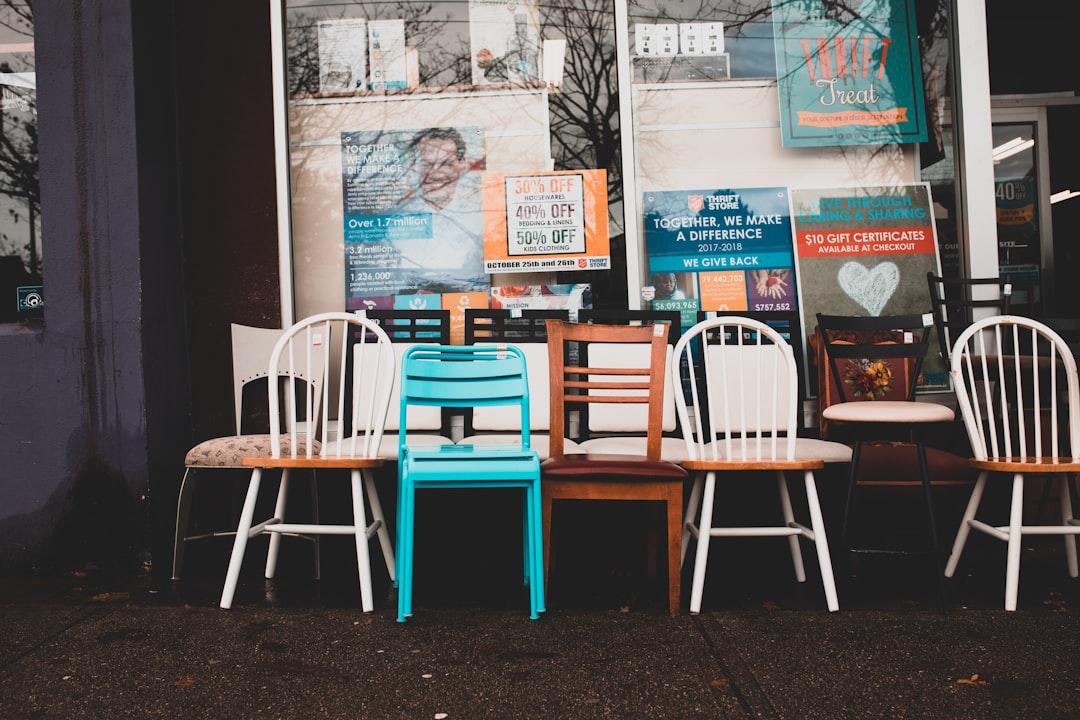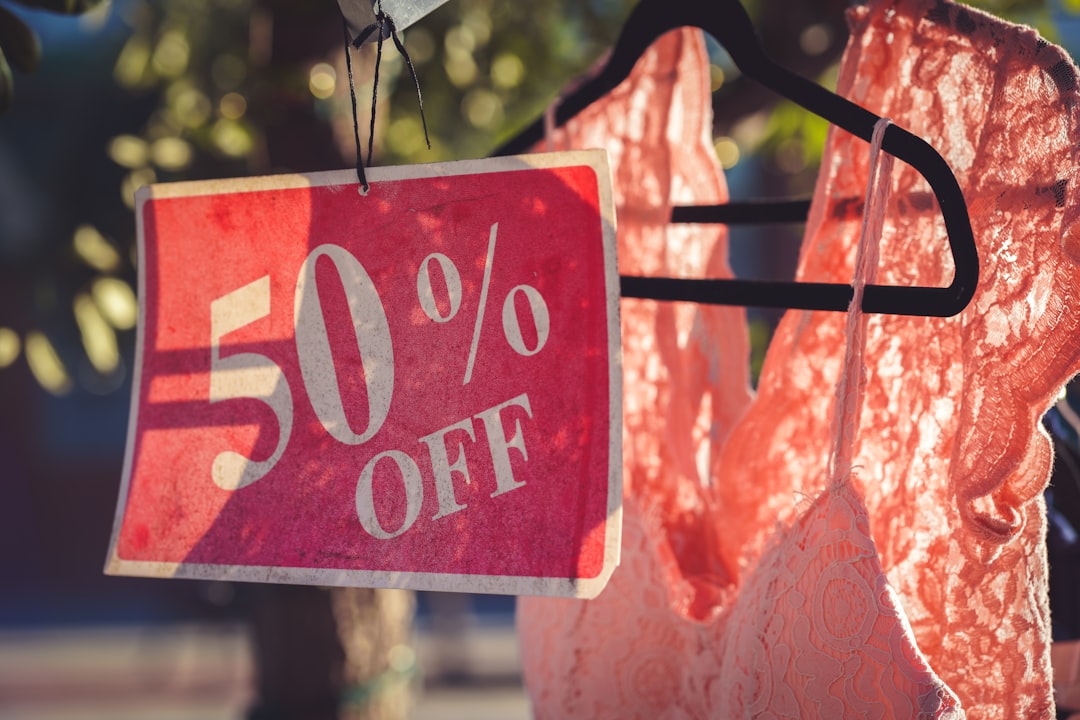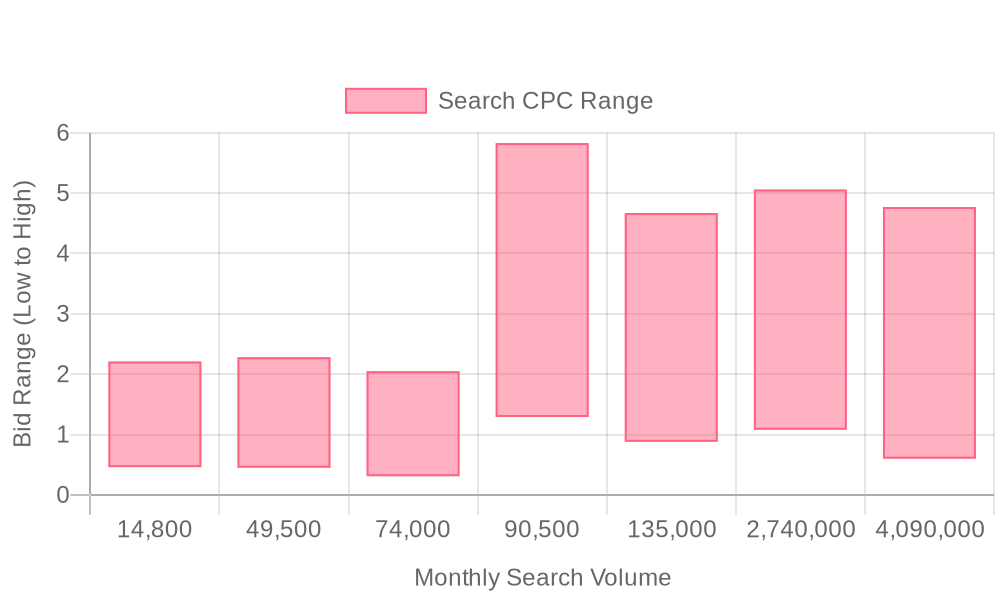
Supercharge your lead generation with a FREE Google Ads audit - no strings attached! See how you can generate more and higher quality leads
Get My Free Google Ads AuditFree consultation

No commitment
Supercharge your lead generation with a FREE LinkedIn Ads audit - no strings attached! See how you can generate more and higher quality leads
Get My Free Google Ads AuditFree consultation

No commitment
Supercharge your lead generation with a FREE Meta Ads audit - no strings attached! See how you can generate more and higher quality leads
Get My Free Google Ads AuditGet My Free LinkedIn Ads AuditGet My Free Meta Ads AuditFree consultation

No commitment
Supercharge your lead generation with a FREE Google Ads audit - no strings attached! See how you can generate more and higher quality leads
Get My Free Google Ads AuditFree consultation

No commitment
Navigating the competitive landscape of online marketing can be daunting for second-hand stores. How do you attract and convert potential buyers while balancing tight resources? Challenges such as missing high-value prospects, delayed follow-ups, and generic campaigns can lead to lost opportunities and lower ROI. This is where Google Ads transforms the game by capturing high-intent customers exactly when they're searching for second-hand goods, bridging the gap between curiosity and conversion. This comprehensive guide helps you leverage Google Ads to elevate your second-hand retail business, driving both foot traffic and online engagement effectively.

Second-hand stores must compete for attention in a digital landscape filled with new and established retailers. A precise Google Ads strategy offers the opportunity to surface unique inventory to high-intent buyers, fueling lead generation and sustainable revenue growth.
Effective advertising for second hand goods hinges on accurate targeting, timely engagement, and seamless measurement across the funnel. By leveraging a unified approach, revenue teams can minimize wasted budget and focus on prospects with immediate purchase intent. Google Shopping Ads provides a channel for surfacing second-hand products to active shoppers.
This step-by-step framework positions second hand retailers to maximize the impact of Google Ads, generating more qualified leads and accelerating their path to purchase across the digital and physical storefront.

Second-hand stores operate in a highly dynamic market where inventory turnover, consumer demand, and regional trends shift rapidly. Leveraging Google Ads gives these retailers the agility to engage digital-first shoppers who actively seek unique items, bargains, or sustainable shopping experiences.
With unified online and offline attribution, second-hand retailers can connect ad spend directly to both digital transactions and in-store visits, finally gaining a complete view of true ROI. For more insights on maximizing paid media impact, check out our guide on Boost Google Ads ROAS. This data-driven approach transforms online thrift store marketing from guesswork into a measurable, scalable growth engine.

Second-hand stores operate in an environment where brand visibility, timely engagement, and targeted acquisition drive measurable results. Leveraging Google Ads unlocks multiple campaign formats that address these objectives, each tailored to unique marketing hurdles commonly faced in resale retail.

Second hand stores navigating the digital landscape can unlock growth by focusing on precise, intent-driven marketing strategies tailored to their unique inventory. Success depends on identifying segments and channels that deliver incremental reach and actionable engagement rather than relying on broad, generic campaigns.
Integrating advanced visitor identification and real-time intent data into these strategies allows second hand stores to move beyond anonymous web traffic, shifting budget toward high-converting accounts as soon as they demonstrate buying signals. Platforms like Sona Identification are designed to reveal which businesses are visiting your site, supporting smarter budget allocation and more effective second hand store advertising strategies.
Precise audience segmentation unlocks greater relevance and ROI for second-hand stores, matching each campaign to the right shoppers at the right moment. By analyzing customer behaviors and preferences, revenue teams can personalize messaging, offers, and ad creative for maximum impact throughout the buyer journey.
Implementing advanced audience segmentation transforms second hand store advertising strategies. Teams can identify visitors at the company and contact level, sync these enriched audiences with Google Ads or Salesforce, and tailor touchpoints as prospects progress toward conversion. This builds on the strategies outlined in our Retargeting guide, enabling second-hand retailers to scale sustainable growth in a competitive landscape.

| Industry | Keyword | Monthly Search Volume | Competition Level | Low Bid | High Bid |
| Second Hand Stores | second hand furniture near me | 14800 | MEDIUM | 0.46 | 2.21 |
| Second Hand Stores | used furniture stores near me | 49500 | MEDIUM | 0.45 | 2.28 |
| Second Hand Stores | used furniture near me | 74000 | MEDIUM | 0.31 | 2.05 |
| Second Hand Stores | second hand stores | 90500 | LOW | 1.29 | 5.83 |
| Second Hand Stores | thrift shops near me | 135000 | LOW | 0.88 | 4.67 |
| Second Hand Stores | thrift store | 2740000 | LOW | 1.08 | 5.06 |
| Second Hand Stores | thrift stores near me | 4090000 | LOW | 0.6 | 4.77 |
A precise keyword strategy is the backbone of high-performing Google Ads for second hand stores. Targeting terms like "Google Ads for thrift stores," "PPC for second hand shops," and "Google Shopping ads for used items" captures buyers actively searching for pre-owned products, maximizing campaign relevance and conversion potential. These keywords reflect strong purchasing intent, ensuring ad spend reaches consumers ready to buy rather than those only browsing. Google Shopping ads provides a deeper look at this trend.
To further refine performance, focus on building negative keyword lists that exclude searches with low intent or unrelated queries, such as "free," "DIY," or "how to donate." This practice filters out unqualified traffic, protecting budget and ensuring every click has a higher chance of driving value. By consistently analyzing search query reports, marketers can identify emerging negative keywords and fine-tune targeting for sustained efficiency. For more insights on increasing ad efficiency, check out our guide on Google Ads ROI.
Sona enables marketers to move beyond surface-level keyword targeting by linking CRM and behavioral data to ad campaigns. This approach allows revenue teams to identify high-intent accounts and sync enriched audience segments directly into Google Ads. As a result, ads dynamically reach prospects most likely to convert, and budgets are automatically shifted toward top-performing audiences as in-market intent changes. Platforms like Sona Audiences are designed to help you find and engage your most valuable segments, driving measurable ROI for second hand store advertising strategies.
Modern second-hand stores can elevate growth by structuring digital ad campaigns around precision, consistency, and actionable data. Teams that align messaging, tracking, and user experience at every campaign touchpoint see greater ROI and more efficient lead management.
A robust execution framework not only drives more qualified traffic but also empowers revenue teams to act on real buyer intent. The following steps detail a proven process for running high-converting Google Ads for second hand stores. One analysis in Google Shopping case studies explores how strategic campaign frameworks drive measurable improvements in e-commerce performance.
Effective keyword selection is fundamental when driving Google Ads for thrift stores and resale shops. Start by compiling granular lists focused on your most profitable categories, such as “vintage denim jackets,” “used designer handbags,” and “mid-century modern furniture.” Localize queries to attract shoppers in your service area by incorporating geo-specific phrases like “second hand store near [city]” or “thrift furniture in [neighborhood].” Utilize negative keywords to filter out irrelevant searches, such as “free,” “DIY,” or “replica,” ensuring the ad budget stays focused on buyers with real purchase intent.
Sona enables marketers to move beyond anonymous traffic data, connecting keyword performance to real visitor identities and company profiles. Platforms like Visitor Identification help reveal which search terms are driving high-value leads, allowing teams to optimize spend and messaging around those that correlate with actual conversions.
Compelling ad copy must speak directly to common friction points in second hand store advertising strategies, such as slow response times or lack of inventory transparency. Highlight solutions to these pain points with phrases like “Instant inventory updates” or “Same-day pickup available.” Integrate time-sensitive offers—“20% off first purchase today”—to prompt immediate action and differentiate your store in crowded search results.
With Sona’s real-time intent signals, marketers can quickly identify which ad variations are resonating with in-market buyers. This builds on the strategies outlined in Retargeting Playbook, allowing for rapid creative iteration and alignment with audiences demonstrating active buying intent.
Landing pages should provide a seamless transition from ad to site, reinforcing the promise made in your copy and supporting users with clear next steps. For online thrift store marketing, prioritize mobile-friendly layouts, large product imagery, and straightforward CTAs such as “Reserve Now” or “Book a viewing.” Address the need for prompt and accurate follow-up by integrating features like live chat or instant inquiry forms, helping visitors feel valued and attended to from the outset.
Sona’s advanced attribution and conversion tracking ensures every interaction—including form fills, calls, and in-store visits—is captured and attributed to the correct campaign and ad group. Solutions such as Conversion Attribution give teams clarity to prioritize follow-up with leads demonstrating the highest value, maximizing the impact of each touchpoint.
Continuous optimization is essential for sustainable results in PPC for second hand shops. Implement regular split testing of ad creative, targeting, and landing pages to identify what drives the best conversion rates. Use campaign data to adjust bids, allocate budget to top-performing segments, and pause underperforming assets. Google Ads Tips provides a deeper look at this trend and offers actionable testing strategies for retailers.
Integrating Sona into this workflow enables dynamic audience updates as leads move through the funnel. Audience lists automatically sync between Google Ads, your CRM, and sales platforms, ensuring ads and follow-up communications are always relevant to the lead’s current stage. This reduces wasted spend, boosts engagement, and delivers a measurable lift in overall campaign ROI for advertising second hand goods.

Second-hand store operators are navigating a highly competitive market where digital presence and tailored outreach determine growth. Success depends on leveraging data-driven tactics that zero in on the right audiences while maximizing budget efficiency. Thrift store marketing provides a deeper look at this trend and offers actionable tips for standing out in a crowded market.
Ready to elevate your marketing strategy? Start now with a streamlined onboarding experience tailored to second-hand retailers.
Running successful Google Ads campaigns for your second-hand store doesn’t have to feel like a guessing game. With the right strategies—like targeting high-intent keywords, leveraging audience segmentation, and optimizing for mobile—you can turn clicks into loyal customers and boost your resale business.
We’ve covered how to overcome common challenges, from standing out in a competitive market to crafting compelling ad copy that highlights the unique value of second-hand shopping. By focusing on data-driven decisions and continuous optimization, you can maximize your ad spend and drive measurable results.
Imagine your store attracting the right buyers, effortlessly converting window shoppers into paying customers, and growing your revenue without wasting budget on ineffective ads. These results are within reach—all it takes is applying the tactics we’ve outlined and staying committed to refining your approach.
Ready to put these strategies into action? Start a free trial to experience a platform designed to simplify and supercharge your Google Ads performance.
To set up Google Ads for your second-hand store, focus on building targeted keyword lists, writing engaging ad copy, creating purpose-driven landing pages, and optimizing performance through data-driven testing. Utilize platforms like Sona for visitor identification and intent data to enhance targeting and budget allocation.
Best practices for Google Shopping ads for second-hand items include accurate targeting, aligning ads with landing pages, leveraging real-time intent signals, and integrating cross-channel marketing strategies to maximize engagement and ROI.
The budget for Google Ads for a thrift store should focus on high-intent audiences and optimize spend by using precise targeting and keyword strategies to ensure every click is valuable, minimizing wasted spend.
Search campaigns, display ads, video ads, and remarketing are effective for second-hand retail, each tailored to engage specific audiences and improve brand visibility and conversion rates.
Optimize Google Ads for used goods by using intent signals for precise targeting, aligning ads with user intent and landing pages, and integrating CRM data to tailor messaging and improve retargeting efforts.
Join results-focused teams combining Sona Platform automation with advanced Google Ads strategies to scale lead generation

Connect your existing CRM

Free Account Enrichment

No setup fees
No commitment required

Free consultation

Get a custom Google Ads roadmap for your business
Join results-focused teams combining Sona Platform automation with advanced Meta Ads strategies to scale lead generation

Connect your existing CRM

Free Account Enrichment

No setup fees
No commitment required

Free consultation

Get a custom Google Ads roadmap for your business
Join results-focused teams combining Sona Platform automation with advanced LinkedIn Ads strategies to scale lead generation

Connect your existing CRM

Free Account Enrichment

No setup fees
No commitment required

Free consultation

Get a custom Google Ads roadmap for your business
Join results-focused teams using Sona Platform automation to activate unified sales and marketing data, maximize ROI on marketing investments, and drive measurable growth

Connect your existing CRM

Free Account Enrichment

No setup fees
No commitment required

Free consultation

Get a custom Google Ads roadmap for your business
Over 500+ auto detailing businesses trust our platform to grow their revenue
Join results-focused teams using Sona Platform automation to activate unified sales and marketing data, maximize ROI on marketing investments, and drive measurable growth

Connect your existing CRM

Free Account Enrichment

No setup fees
No commitment required

Free consultation

Get a custom Google Ads roadmap for your business
Over 500+ auto detailing businesses trust our platform to grow their revenue
Join results-focused teams using Sona Platform automation to activate unified sales and marketing data, maximize ROI on marketing investments, and drive measurable growth

Connect your existing CRM

Free Account Enrichment

No setup fees
No commitment required

Free consultation

Get a custom Google Ads roadmap for your business
Over 500+ auto detailing businesses trust our platform to grow their revenue
Our team of experts can implement your Google Ads campaigns, then show you how Sona helps you manage exceptional campaign performance and sales.
Schedule your FREE 15-minute strategy sessionOur team of experts can implement your Meta Ads campaigns, then show you how Sona helps you manage exceptional campaign performance and sales.
Schedule your FREE 15-minute strategy sessionOur team of experts can implement your LinkedIn Ads campaigns, then show you how Sona helps you manage exceptional campaign performance and sales.
Schedule your FREE 15-minute strategy sessionOur team of experts can help improve your demand generation strategy, and can show you how advanced attribution and data activation can help you realize more opportunities and improve sales performance.
Schedule your FREE 30-minute strategy sessionOur team of experts can help improve your demand generation strategy, and can show you how advanced attribution and data activation can help you realize more opportunities and improve sales performance.
Schedule your FREE 30-minute strategy sessionOur team of experts can help improve your demand generation strategy, and can show you how advanced attribution and data activation can help you realize more opportunities and improve sales performance.
Schedule your FREE 30-minute strategy sessionOur team of experts can help improve your demand generation strategy, and can show you how advanced attribution and data activation can help you realize more opportunities and improve sales performance.
Schedule your FREE 30-minute strategy session





Launch campaigns that generate qualified leads in 30 days or less.
